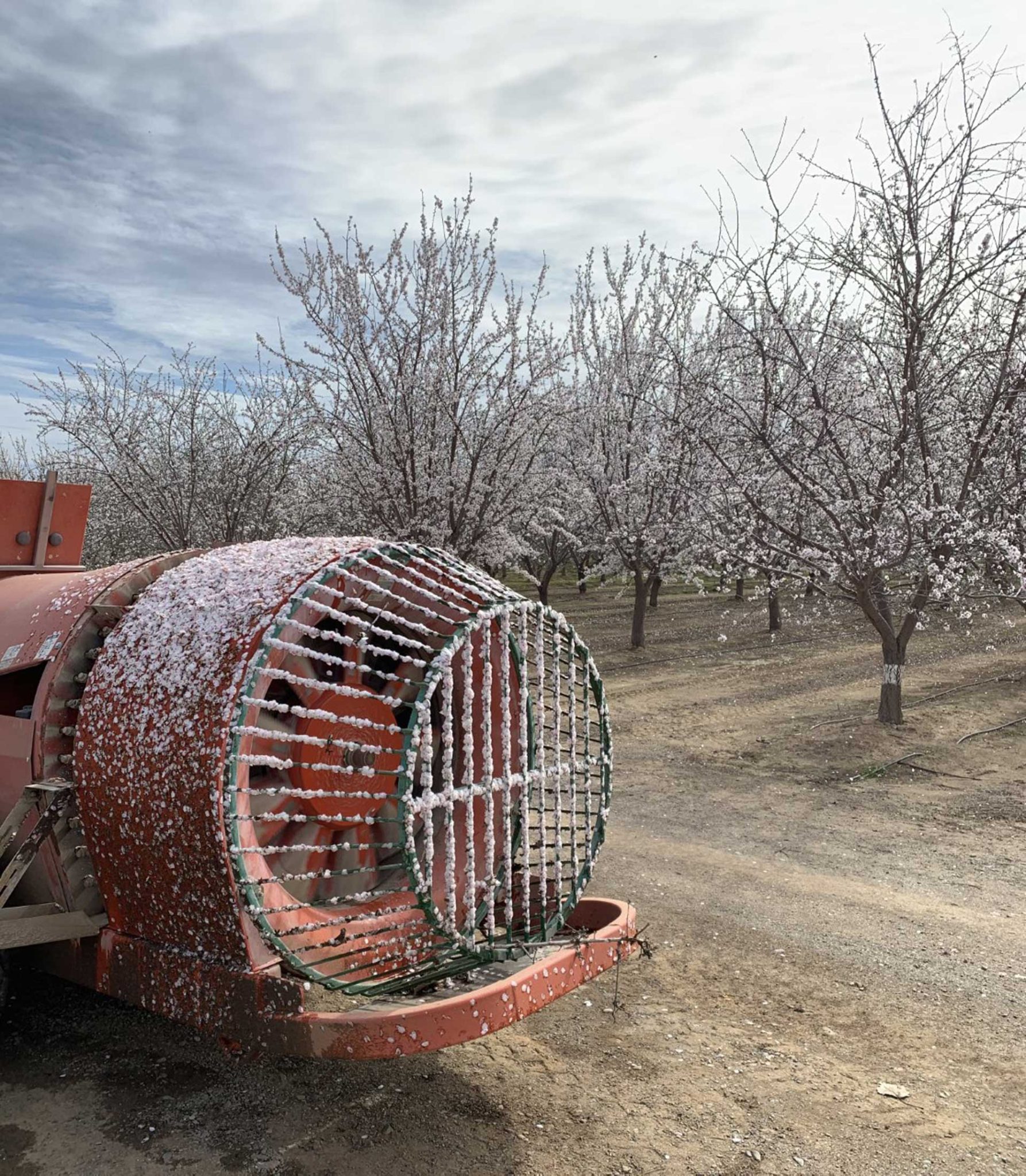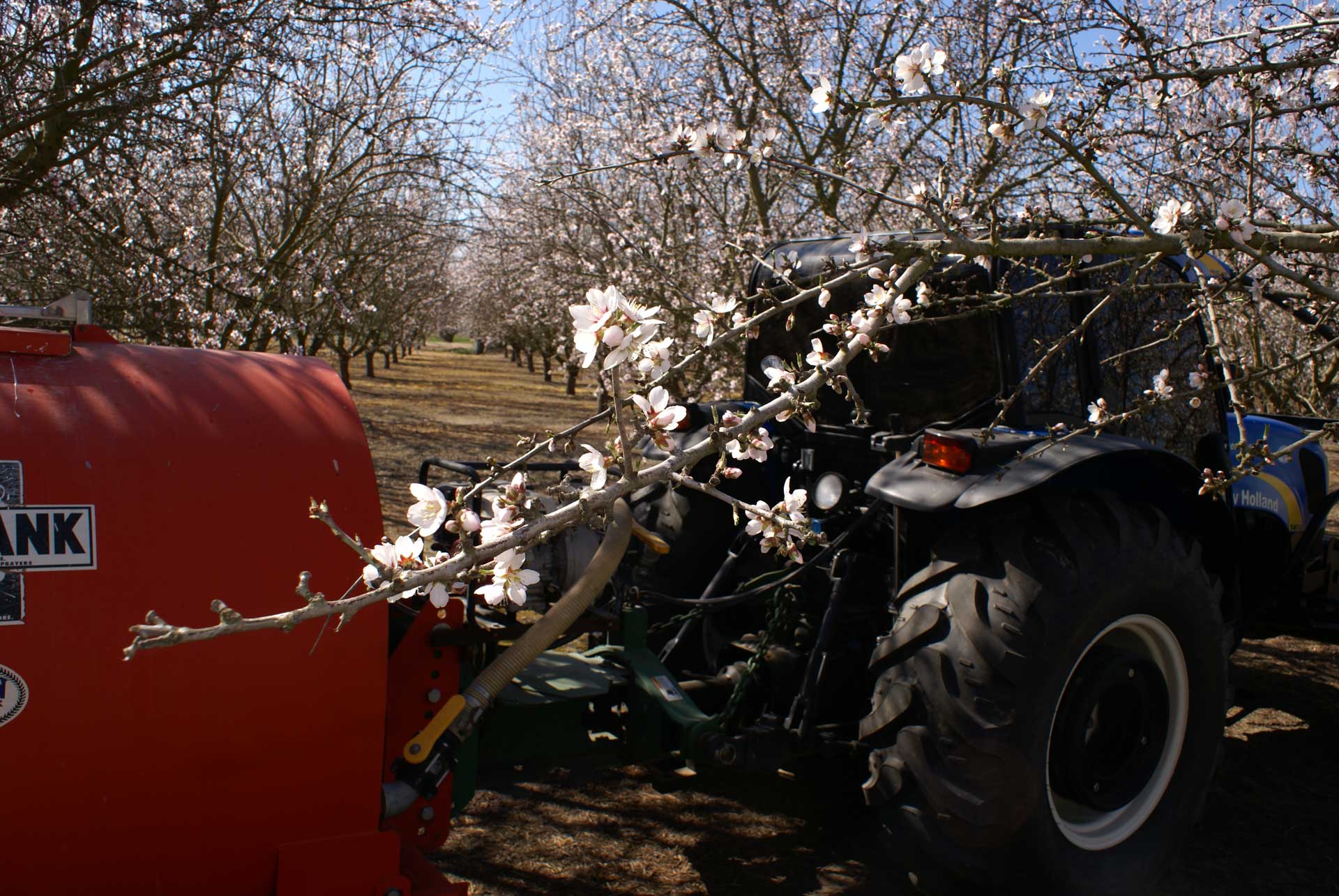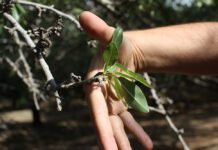
California almond growers saw a record crop in 2020 of 3.12 billion meat pounds. By comparison, 2021 almond production was about 20% lower at 2.80 billion meat pounds based on 1.33 million bearing acres.
Franz Niederholzer, UCCE farm advisor for Colusa, Sutter and Yuba counties, is concerned about weather and economic conditions for the 2022 crop.
There is a combination of things that are impacting almond growers, Niederholzer said, besides a reduced price, that include water availability, supply chain issues increasing input costs and heavy crops in previous years.
“This year is going to be a real test,” he said. Given the current dry weather, the looming question is: will there be water to grow the crop?
Current Situation
Right now, it’s too early to tell how the 2022 crop will shake out, but the market currently is not in a great place, Niederholzer said.
Weather is a main concern. “We had a really nice start to the water year, but now things are dry and they look to be dry for a while, so that makes you nervous. Lake Shasta is only half the volume of what it is on average this time of year,” Niederholzer said.
If weather patterns don’t change, Niederholzer has heard the outlook on federal project water allocation is not good, at least with how it stands right now.
“That’s obviously subject to change if rainfall increases, but there’s plenty of reasons for growers to be very concerned about water,” Niederholzer continued.
The supply chain is another issue that has increased prices for growers. “UN32 (nitrogen) is more than double what it was several years ago, up almost 50% from last fall. Potassium is up about 20% to 30% over last year, so the price of inputs is way up,” Niederholzer said, plus there’s reportedly a limited availability of certain pesticides coming from offshore.
Bloom Diseases
There are several major diseases at bloom, according to Niederholzer, that, depending on weather, can require multiply sprays. These include: Brown rot; Shot hole; Jacket rot if it’s cold and wet; Anthracnose if it’s warm and wet; Leaf blight; and Scab at petal fall if a dormant spray wasn’t applied.
Bacterial diseases at bloom include: Blossom blast if there is frost; Leaf Spot in certain varieties during wet years
Cutting Corners
Can growers reduce chemical usage without risking crop damage? The answer is weather-dependent.
“If the weather’s dry at bloom, as in no rain, then one good spray will work compared to two,” Niederholzer said, but if it rains at bloom, two sprays, one at pink bud and one at full bloom, are recommended.
If there’s wet weather at bloom, not spraying means there’s a very good chance disease will develop, Niederholzer said.
Planning a Fungicide Program
Planning your fungicide program has multiple benefits, according to a recent post on The Almond Doctor blog from David Doll.
Doll advises growers to take time and identify fungicides and their modes of action to develop a rotation strategy. This is especially important when money is tight. Doing this gives growers the ability to price and compare different options and swap materials at specific points, he said.
There are several factors that need to be considered when planning a yearlong spray program, including:
- Anticipated weather during flowering
- Disease history
- Materials available
- Operational tolerance to disease
- Ability to spray (budget constraints)
“Dry weather during flowering will reduce the need to spray, while free moisture from rainfall or humidity/fog can increase disease pressure. If dry conditions are present, fungicide sprays can be withheld until conditions change. In these types of years, bloom typically progresses rapidly, making it difficult to spray due to the shorter duration. As the flowering period ends and petal fall begins, it may make sense to consider a “clean-up” spray for any infections that might have occurred,” Doll said.
Budget constraints vary by operation and are an important factor in years with uncertain commodity pricing. Doll suggests that if growers need to reduce expenses, try to be timelier with fungicide sprays by applying only when weather conditions favor disease. He goes on to say to consider reducing or eliminating various additives instead of reducing sprays.
“These additional products have been shown to have limited success in replicated trials. They also may not be required based on the fungicide being used, and the costs add up with multiple sprays. Spray only when and it is needed to protect the crop, and the budget will take care of itself,” Doll said.
“The most expensive spray is the one that is not needed,” Doll reminded growers.

Increasing Efficiencies
There are other ways, besides reducing chemical applications, to trim costs. There are places where growers can save money by looking at efficiencies.
“If things have to be done, and they’re getting more expensive to do, you really want to make sure that what you do is done right, rather than have to do it again or accept less pest control than if the job was done properly the first time,” Niederholzer said, adding with this strategy, growers can be much more efficient with their materials.
Calibration of equipment is another way to increase efficiency. “If you’re spraying by ground at bloom, you can drive faster than you should once the leaves fill in,” Niederholzer said, adding this will give the grower a labor savings, and labor can be a big portion of pesticide application costs.
“If at bloom you increase your groundspeed a third compared to spring or summer speed, your operator time is cut by a third because you’re faster getting across a block. You can also cut your spray volume, for example, to 70 gallons per acre (GPA) at bloom because there is less surface area in the canopy to cover compared to after leaf-out; so now, instead of spraying five acres or less per tank, it’s seven-plus acres, and that saves on fill time,” Niederholzer said. “For a 100-acre block, a 70-GPA spray volume means refilling 14 times instead of the 20 times needed for 100 GPA.”
These are little things, Niederholzer continued, but they add up, and so they are worth considering. Make sure your sprayer is calibrated to deliver good coverage throughout the tree, especially if reducing spray volume.
Planning ahead is also important. “If you wait, and you think, ‘Well we’ll skip that, or we’ll just see how things go,’ you often end up playing catchup, and that’s often harder to do, especially as the season goes on and spraying gets tougher and more expensive in vigorous, mature orchards,” Niederholzer said.
“The farm management experts say, when things are tight, don’t quit doing one thing, but try to tighten up everything you do. Try to squeeze a 5% reduction in total costs, 5% improvement in quality or price,” he said. Five percent might not be doable, but the idea is to trim in many areas without cutting out one whole proven practice or activity.
When talking about a tight year, a good way to reduce expenditures is to increase efficiency, Niederholzer said, so long as any efficiency investments (e.g., a new nurse tank for spraying) don’t cost more than the savings.
Niederholzer uses nitrogen as an example. “If you can improve your nitrogen use efficiency by 10%, that saves you $35 an acre in material at current nitrogen prices.” More efficient nitrogen practices could include injecting liquid fertilizers later in the irrigation set and applying lower rates of fertilizer more frequently.
Nitrogen efficiency has the added benefit of potentially reducing hull rot later in the season, Niederholzer said, adding excessive nitrogen applications can contribute to hull rot, and reduced hull rot improves yields and a grower’s bottom line.
Because of supply chain issues, Niederholzer knows some growers purchased nitrogen last year when it was cheaper.
“The indications seem to be that it’s not going to get much better soon as far as shipping goes.”
In conclusion, Niederholzer said, as the old saying goes, trim the fat, not muscle. “I think the more you look at something, the more you might be able to find a little bit more here and there.”















